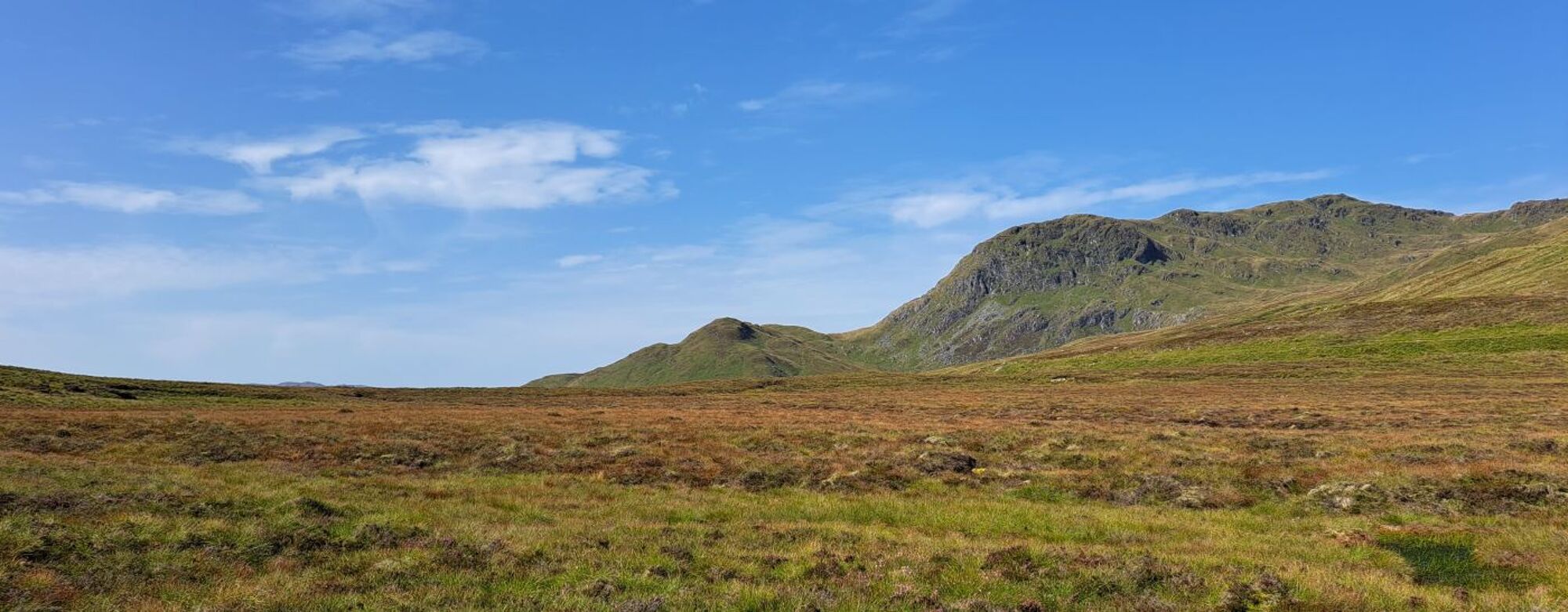Peatlands, Wetlands and the Historic environment

Photo: Ben Lowers NTS. Photo credit: Phil Gould
Historically, peatlands and wetlands were considered either as a useful resource (e.g. a valuable source of domestic fuel and key ingredient in whisky production) or as wastelands, in need of ‘reclamation’ to make them economically productive, often through drainage to improve grazing or sporting value, or in an effort to grow timber. In contrast with these strongly extractivist approaches, the ‘deep time’ perspective of archaeological studies can reveal the mutual processes of exchange between people and these environments. Embracing the evidence for both extraction and deposition, and the cultural folklore, literature and art which challenges these pejorative attitudes of landscape improvers can help is to see such wetlands differently. Arguably, this can help public understanding of contemporary policy and practice which is now better informed by evidence on the roles of wetland and peatland function in biodiversity, carbon cycling and climate change.
Peatlands and other wetlands also fulfil other functions which less widely known. As they lock away carbon, peatlands and wetlands such as lakes preserve a deep-time record of their surrounding environment, human activities, landscape and land-use. Often, the records in these ‘natural archives’ are microscopic, in the form of pollen grains, insect remains, pollutants and soot from burning fossil fuels. This is because the anaerobic conditions within wetlands and peatlands preserve organic materials missing from much of the terrestrial archaeological record. This area of archaeological science is known as ‘palaeoecology’.
In other cases, the evidence is very tangible, such as the original forest stumps (‘bog’ oaks and pine roots) that many hillwalkers will have seen eroding out of peat. These remains can make past human interaction with wetlands seem very close indeed, especially in the case of wonderfully preserved prehistoric wooden trackways with tool marks that still appear fresh, unfamiliar metal ornaments and puzzling ‘bog butter’. Whilst some of these objects are spectacular - cauldrons, torcs, wooden bog figures and weaponry - many are drawn from everyday life: prehistoric vessels, broken tools and food offerings. Their deliberate offering up to the bog tells us of the respect shown by earlier communities to a landscape which they were beginning to transform.
‘Bog bodies’, conversely, tell a variety of stories of lost humanity: some were undoubtedly accidental deaths, others were deliberate burials whilst some might have been the most significant sacrifice a community could offer back to the bog. A nice example of a ‘bog body’ account can be found here: the Amcotts Woman. The body of the woman, with shoes still intact, was found by a peat worker in 1747 and is the earliest historical account of the discovery of a bog body. Only her shoe still survives, though there are sketches of her other shoe and hand. She was likely deposited or fell into the bog sometime during the Roman period.
Overall, then, peatlands play a hugely important role in contributing to the cultural heritage of the UK, preserving thousands of records of interactions between people and places, species, environment, climate and land-use for the entirety of the last 10,000 years. Across the UK, there are an estimated 22,500 archaeological sites located within peatlands, including 11,000 in Scotland, 7,000 in England, 3,500 in Northern Ireland, and 300 in Wales (although the Welsh total is likely to be far larger). This exceptional preservation, particularly of organic remains, means that peatland sites can generally contain up to 90% of materials from past communities, whereas dry land generally only contains 10%.
Finally, peatland and wetland landscapes are of value for their intangible heritage, including historic and contemporary small-scale peat cutting, place names, local folklore and poetry, and associated cultural heritage values. These are often captured in various artistic forms. In other cases, these places represent the remnants of fast disappearing ways of life, that remind us that wetland living is part of our heritage, that contains a wealth of information about adaptation of living with a variety of environmental conditions. It is notable that many of our most notable archaeological finds have been discovered during peat-cutting and drainage of wetlands. Our knowledge of natural and cultural heritage linked with peatlands has benefited from this destruction. However, it has also made palaeoecologists and archaeologists all too aware of the fragility of these finds once peat is disturbed and they are exposed to oxygen, which immediately allows decomposition to set in. Although the archaeological remains are often included in museum exhibitions, and reach the public, the microscopic remains are much more difficult to share.
Here at the University of Glasgow we have an active interest in wetlands and peatlands; several active projects are focused on wetlands and peatlands and a regular Peat Café series meets every month. We also encourage our undergraduate and postgraduate students to undertake studies of Scotland’s peatlands.
Some active projects
- Reconstructing the Wildscape
- Bright Edge Deep
- Ben Lowers peatland project
- Landscapes of Glencoe and Rannoch Moors
- Landscapes of Drumadoon and Machrie Moors, Arran (link to follow)
- Peat Café
- Peatland and Wetland Group Workshop
Staff members and PhD students


